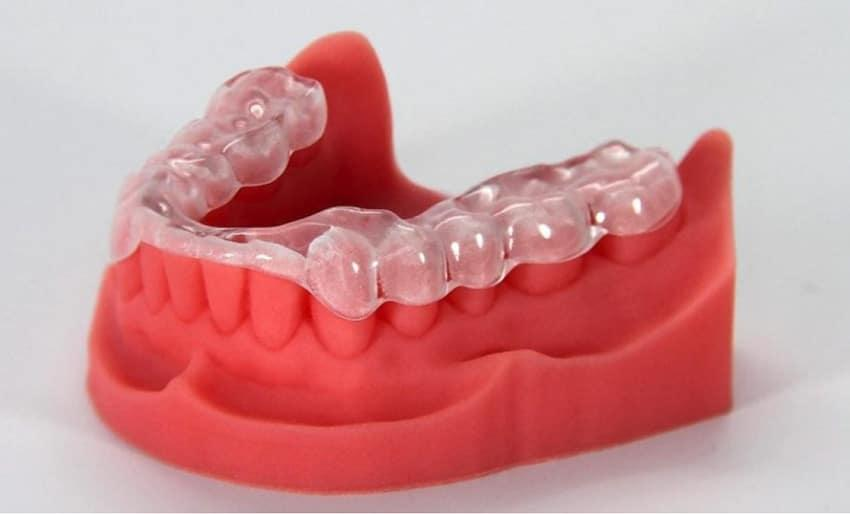3D in dentistry: what technologies are used?

In dentistry, 3D technology is used in a number of ways. Some examples include:
- 3D printing: This technology is used to create physical models of teeth and other oral structures, as well as to fabricate custom dental devices such as crowns and bridges.
- Cone beam computed tomography (CBCT): This type of 3D imaging is used to create detailed, cross-sectional images of the teeth, jaws, and surrounding structures. It is often used to plan dental implant surgery and other procedures.
- 3D software: Dentists may use 3D software to plan and simulate treatment, as well as to communicate with patients and other dental professionals.
- 3D scanners: These devices are used to create digital 3D models of teeth and other oral structures. They can be used for a variety of purposes, including diagnosis, treatment planning, and the creation of custom dental devices.
- Virtual reality (VR) and augmented reality (AR): These technologies are being explored for use in dental education and training, as well as for patient communication and treatment planning.
Using 3D printing in dentistry
3D printing has a number of potential applications in dentistry, including:
- Fabricating custom dental devices: 3D printing can be used to create custom-fit crowns, bridges, and other devices. This can be especially helpful for patients with unusual tooth shapes or for those who have a hard time finding devices that fit properly.
- Creating physical models for planning and simulation: 3D-printed models of teeth and other oral structures can be used to plan and simulate dental procedures. This can help dentists visualize the treatment and make any necessary adjustments before proceeding.
- Printing temporary restorations: In some cases, 3D printing can be used to create temporary restorations such as crowns or bridges while the permanent restoration is being fabricated.
- Printing surgical guides: 3D printing can be used to create surgical guides that help dentists place dental implants accurately.
- Printing dental prosthetics: 3D printing can be used to create prosthetics such as dentures, which can be customized to fit the individual patient's mouth.
Overall, 3D printing has the potential to revolutionize the way dental devices are fabricated, making it faster and easier to create custom-fit devices that are comfortable and effective for patients.
What are the advantages of 3D printing in the production of eliners?
There are a number of advantages to using 3D printing in the production of eliners, which are thin, custom-fit liners that are used to protect teeth during orthodontic treatment:
- Custom fit: 3D printing allows eliners to be fabricated to fit the exact shape of the patient's teeth, which can help improve comfort and effectiveness.
- Speed: 3D printing can produce eliners more quickly than traditional fabrication methods, which can be beneficial for patients who need them right away.
- Accuracy: 3D printing allows for high levels of accuracy in the production of eliners, which can help ensure that they fit properly and provide the necessary protection.
- Reduced waste: Because eliners are fabricated using 3D printing, there is less waste material compared to traditional fabrication methods, which can be more cost-effective and environmentally friendly.
- Greater design flexibility: 3D printing allows for greater design flexibility, which can be beneficial in the production of eliners. For example, it may be possible to create eliners with features such as grooves or ridges to improve grip or with different thicknesses to provide different levels of protection.
Overall, 3D printing has the potential to revolutionize the way eliners are produced, making it faster, more accurate, and more cost-effective to create custom-fit eliners that are comfortable and effective for patients.
Features of the Flashforge Creator 4-S 3D Printer
The Flashforge Creator 4-S is a 3D printer that is designed for professional use. Some key features of the Creator 4-S include:
- High print quality: The Creator 4-S is capable of producing high-quality prints with fine details and smooth finishes.
- Large build volume: The Creator 4-S has a large build volume of 300 x 250 x 300 mm, which allows it to print large objects or multiple smaller objects at once.
- Dual extruders: The Creator 4-S has two extruders, which allows it to print with two different materials or colors at the same time.
- Wi-Fi connectivity: The Creator 4-S has Wi-Fi connectivity, which allows it to be controlled remotely via a computer or mobile device.
- Automatic bed leveling: The Creator 4-S has an automatic bed leveling system, which helps ensure that the print bed is level and that prints come out correctly.
- Filament detection: The Creator 4-S has a filament detection system that alerts the user when the filament is running low or has run out.
- Safety features: The Creator 4-S has a number of safety features, including a fully enclosed build chamber and a power supply with short circuit and overcurrent protection.
Overall, the Flashforge Creator 4-S is a versatile and reliable 3D printer that is well-suited for professional use.
